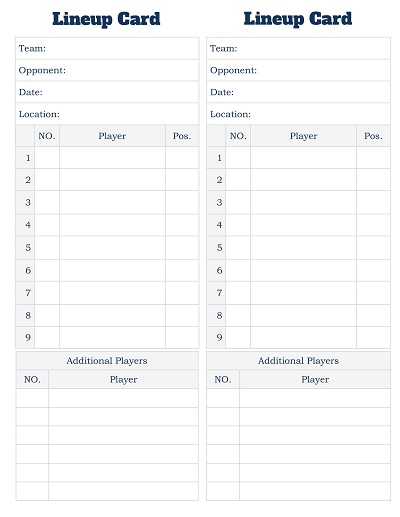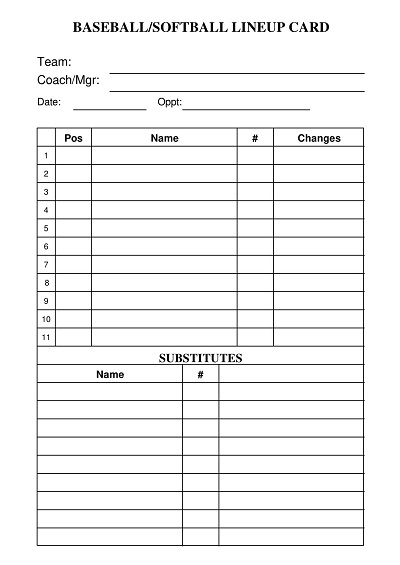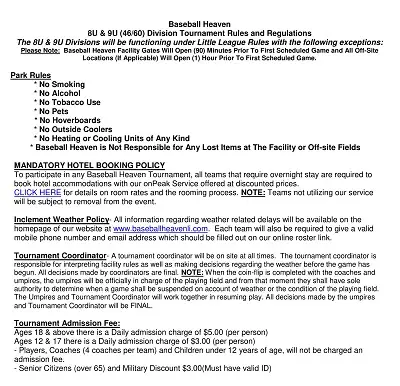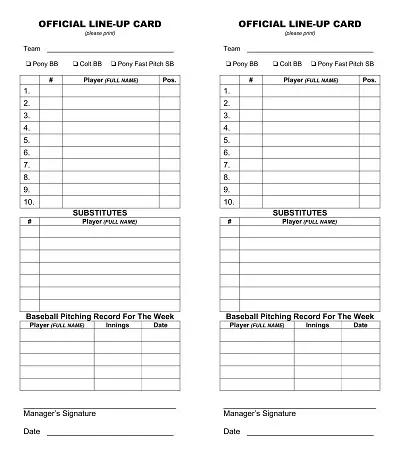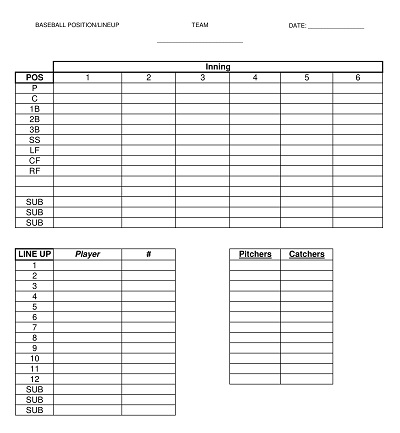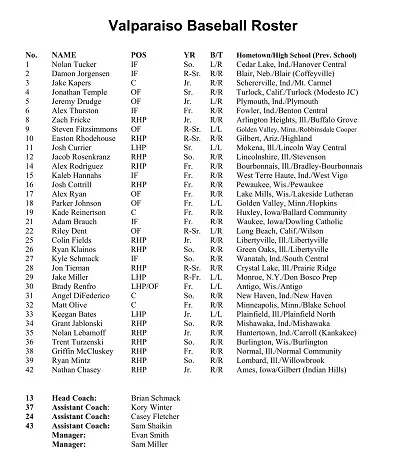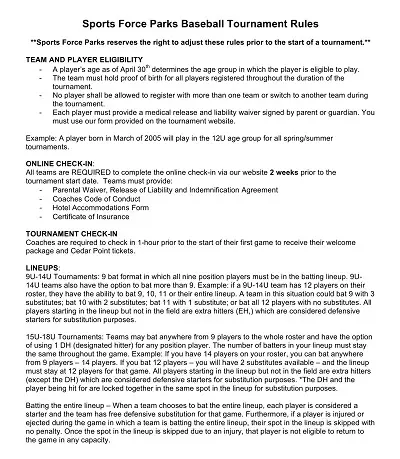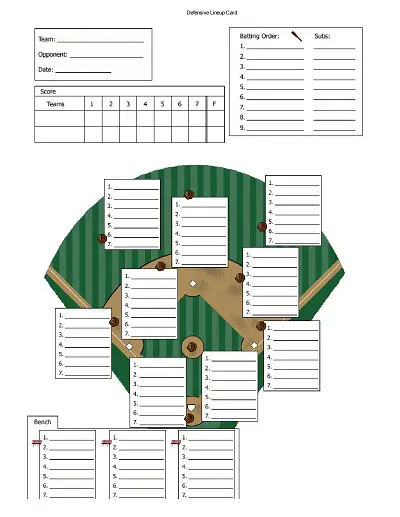Team Name and Logo
- The name and logo of the team are usually displayed at the top of the lineup card for identification.
- The opposing team’s name is often included to provide quick reference.
- Date: The date of the game.
- Time: The scheduled start time of the game.
- Location: The name of the ballpark or field where the game will be played.
- The name of the team’s manager is often listed.
- The batting order indicates the sequence in which players take turns at bat. Each player is assigned a number, typically 1 through 9, indicating their position in the order.
- If used, the designated hitter (DH) is also included in the batting order.
- Player Name: Each player’s full name in the lineup.
- Uniform Number: The jersey number worn by each player.
- Position: The defensive position each player will play during the game (e.g., pitcher, catcher, shortstop, etc.).
- The starting pitcher’s name and uniform number often indicate if they visited the team.
- The opposite starting pitcher’s information may be included if the team is the home team.
- The manager may substitute during the game for injuries, strategy, or other reasons. These changes are noted on the lineup card with the replacement player’s information.
- Players who are not in the starting lineup but are available on the bench are usually listed with their names and positions. A baseball lineup card is crucial for a team’s manager to communicate a particular game’s batting order and defensive positions.
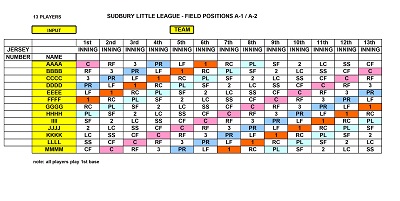
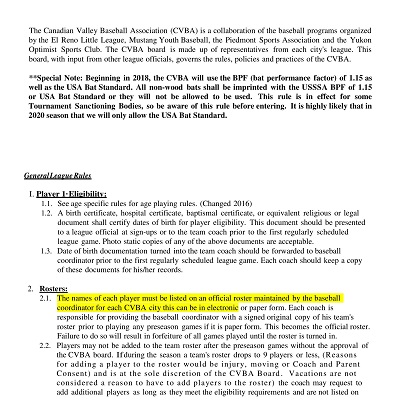
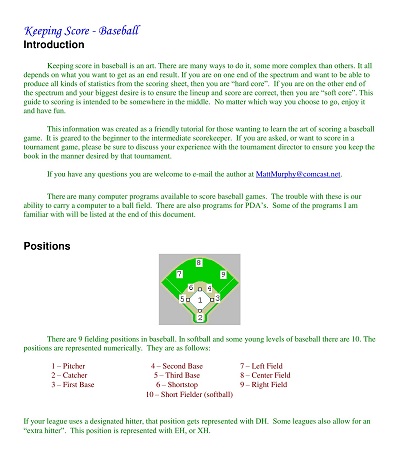
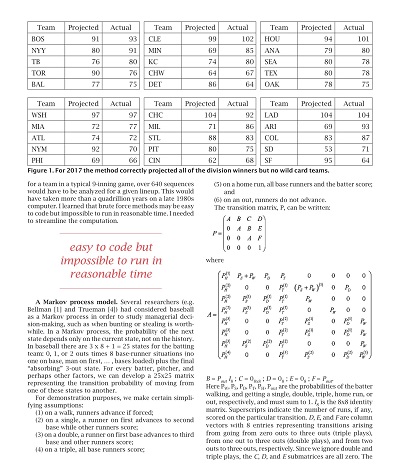
How to Create a Baseball Lineup Card Template
Creating a baseball lineup card template can be done using various software programs, including word processors, spreadsheet applications, or graphic design tools. Here are simple guides to utilize Microsoft Word, and you can choose these steps.
- Open Microsoft Word on your computer
- Go to the page layout tab and set the document layout to landscape orientation.
- Enter the title. “Baseball Lineup Card Templates” at the top of the document. Include space for the team name, coach name, data, and other relevant information.
- Insert a table to organize the batting order, and create another table for defensive positions. Include columns for player number, player name, and defensive position.
- Add a section for pitch information and the start pitcher’s name and jersey number.
- Insert a table to organize the batting order. Designate columns for player number, name, and batting position (1-9).
- Below the batting order table, create another table for defensive positions.
- Add a section for pitch information in addition to the starting pitcher’s name and jersey number.
- Create space for substitutions and bench players. They can include additional tables or sections with columns for player number, player name, and the planned inning or situation for substitution.
- Save your lineup card template as a Word file (.docx) so you can reuse it for future games without modifying the original template.
- Once you’ve filled in the specific details for a game, you can print copies of the lineup card or save and share it electronically with your coaching staff.
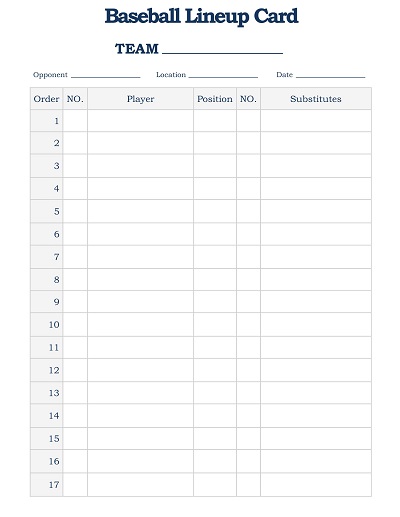
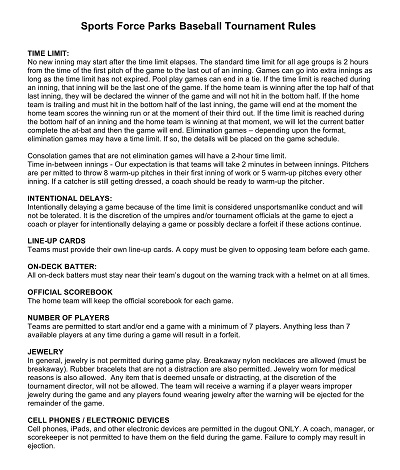
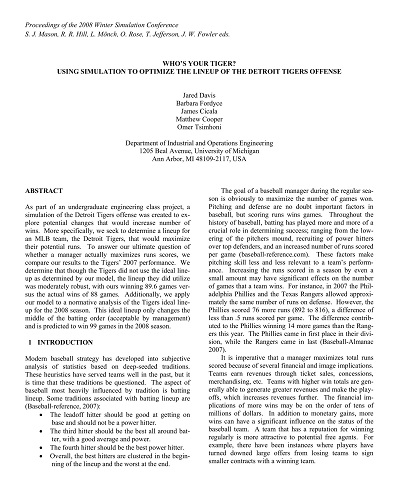
Here are some types of Baseball Lineup Cards:
- Baseball: The traditional form of the game played in professional leagues like Major League Baseball (MLB) in the United States and similar leagues worldwide.
- Softball: A variant of baseball with a larger ball and smaller field. It is often played by both men and women at the amateur level.
- Tee-ball: A simplified version of baseball designed for young children, where the ball is placed on a stationary tee for the batter to hit.Baseball: The traditional form of the game played in professional leagues like Major League Baseball (MLB) in the United States and similar leagues worldwide.
- Softball: A variant of baseball with a more giant ball and a smaller field. It is often played by both men and women at the amateur level.
- Tee ball: A simplified version of baseball designed for young children, where the ball is placed on a stationary tee for the batter to hit.
Advantages and Disadvantages of Baseball LineupCard
Here are the Advantages and Disadvantages of Baseball LineupCard:
- Advantage: Lineup cards help organize and communicate essential information about the batting order, defensive positions, and substitutions for the team. A clear and well-organized lineup helps players know their roles, positions, and the overall game strategy. Lineup cards provide umpires with a clear reference to ensure that the batting order and defensive positions follow the rules. Coaches use lineup cards to strategically plan the game, considering player strengths, matchups, and potential substitutions.
- Disadvantage: Handwritten lineup cards may be prone to errors, such as misspelled names, incorrect jersey numbers, or incorrect interpretation of the coach’s writing. Injuries or other unforeseen circumstances may lead to last-minute changes in the lineup, requiring quick adjustments and potential confusion. Physical lineup cards have limited space, which may become a challenge if there are many substitutions or detailed instructions to convey. Traditional lineup cards rely on paper, and in outdoor environments, they may be susceptible to damage from weather conditions like rain or wind.
Conclusion
In conclusion, the baseball lineup card template is essential for coaches and team managers to strategically organize and communicate player positions and batting orders before a game. The lineup card template typically includes key details such as player names, positions, and batting order, allowing coaches to make informed decisions based on individual strengths and teams.
Furthermore, the lineup card template is adaptable, allowing coaches to adjust as needed, whether due to player availability, matchups, or other game-specific factors. Dynamics. Furthermore, the lineup card template is adaptable, allowing coaches to adjust as needed, whether due to player availability, matchups, or other game-specific factors.

